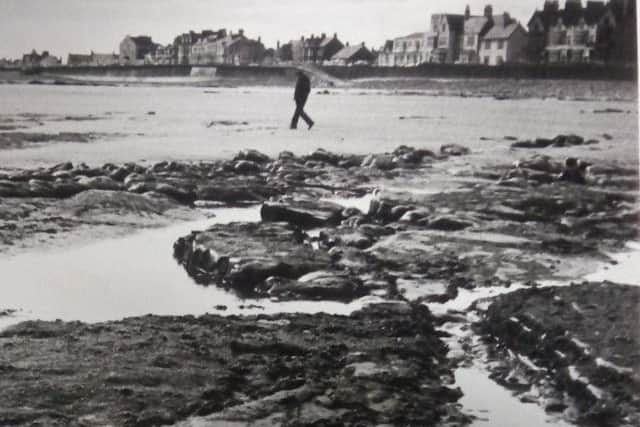The Hartlepool site that's 7,000 years old


We are talking about the submerged forest at Seaton Carew which caused amazement on social media when we posted a photograph of it from the 1970s.
Our photograph showed hundreds of people on the beach, taking a closer look for themselves.


Advertisement
Hide AdAdvertisement
Hide AdSteve Lodge was there. He said: “It was amazing. The furthest I’ve ever seen the sea recede.” So was Dot Davis who described it as “spectacular”.
But Laura Johnson hasn’t yet enjoyed the natural wonder of nature and said: “I wish I’d have seen it. I like this kind of thing. I wonder if there’s more pictures.”
Shaun Wilson chipped in: “My dad has told me about this. He collected seacoal of this beach from about the age of 6 now he is 64..does anyone have any more pics so I can show him.”
We are happy to oblige and here are a couple more for you to enjoy.


Advertisement
Hide AdAdvertisement
Hide AdThe landmark is an underwater forest, commonly known as the petrified forest, and it consists of hundreds of tree stumps which have turned to peat.
Pauline Lutz was another to see it while Colin Bartholomew said: “I went down with friends after finishing night shift at the steelworks.”
Vaughan Lewis said: “Looks good”, while Gerard Scrafton said: “Went with the school a long time-ago.”
Geoff MacKenzie Lilley said: “I saw it exposed in the late 1950’s and the early 70’s.” Sam Greig saw it while Iain Davison said: “My mum muriel took from school – I think we went at lunch time I was at jesmond road junior school so I suppose it must have early 70s perhaps 71 or 72.”
Advertisement
Hide AdAdvertisement
Hide AdLesley Malcolmson asked: “How often do you get to see this? Would love to take my boys”. Glenn Fletcher and Brian White both asked: “When will it be visible again?”
We asked the experts and archeologist Rachel Grahame, at the Hartlepool-based Tees Archeology service, told us: “It is almost impossible to say. It is down to the tides and the shifting of the sand.”
She said it would probably take a “fairly hefty storm” and a low tide to reveal the forest, which is a Site of Special Scientific Interest stretching for several miles, and thought to have originated around 7,000 years ago.
Over the years, experts have found animal bones including deer and wild boar, and in 1994, a fish trap was discovered which was believed at the time to be the oldest in the country.
Advertisement
Hide AdAdvertisement
Hide AdIn recent times, the forest has been seen in the early 1970s (as pictured here), 1987, 1994, and 2007.
But even if you don’t get to see the forest soon, bones and flint tools from the forest are sometimes discovered. “We are very happy to take a look at them,” said Rachel. “We do get bits and bobs washed up and we are always happy for people to come in.”
To find out more, contact (01429) 523455, email [email protected] or visit the Tees Archeology website at www.teesarchaeology.com